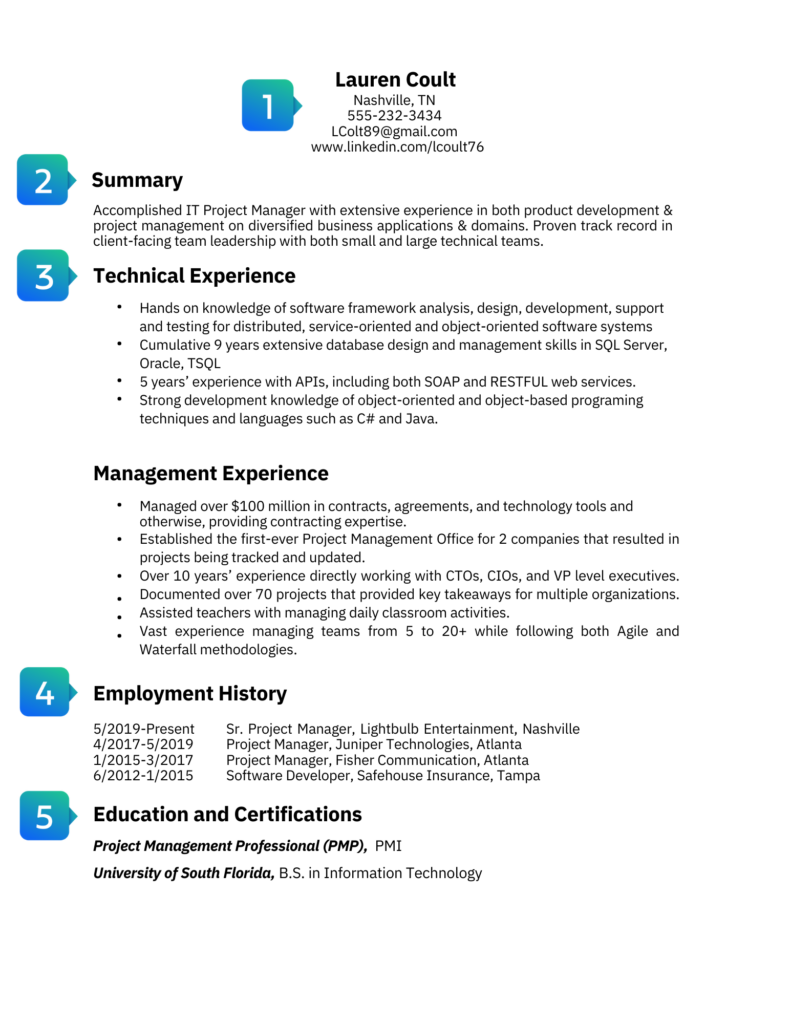What is a functional resume?
A functional resume is a type of resume format that prioritizes your skills and accomplishments over work experience. Instead of listing your jobs and the duties associated with each one like you do in a traditional resume, your duties and skills are grouped by category–technical skills, customer service skills, etc. Work history is formatted as a simple list and takes a lower position on the page.
This style is useful for calling the hiring manager’s attention to your relevant experience even when the job titles you’ve held are in a different field or are unrelated to the one you’re applying for. It can be a good style for new grads who don’t have much work experience to showcase.
You should know that a functional resume is not the preferred format of most hiring managers. Since it follows a different structure than the traditional resume, it takes more time to scan and can require more work on the reader’s part to find the information they’re looking for. So, this format should be viewed as a secondary choice to other, more widely accepted types.
Who should use a functional resume?
- Recent graduates with limited work experience
- People who are switching careers or re-entering the job market
- Applicants who want to downplay job hopping
- Candidates looking to emphasize relevant experience over job titles
Who shouldn’t use a functional type of resume?
- People with a solid career progression
- Candidates in fields with rigid application requirements, like public-sector jobs
- Most job seekers, as it’s not the preferred format of hiring managers
Functional resume format and key components
A functional resume contains some of the same things as a traditional resume, like contact information and a summary (which is optional). In a functional resume, however, skills and experiences are featured more prominently than work history, which appears lower on the page or even at the bottom.
Here are the main resume components in a functional resume:
- Contact information
Provide hiring managers and recruiters with the best method to get in touch with you. Be sure your email address is something professional, preferably including your full name or first initial and last name. It’s best to use an email provider everyone’s familiar with, like Gmail. - Objective or summary
This optional area gives an overview of your professional credentials. If you’re using a functional resume because you’re entering the job market for the first time or switching career paths, this is a good place to provide a little more background information. - Various skills or abilities section
This is the predominant focus for this style. It might be a single section or several sections broken into different categories. These should be customized depending on the candidate and the types of things they want to emphasize. Our sample resume uses two abilities sections: technical experience and management experience, which makes sense since the candidate is an IT project manager.
- Employment history
In this type of resume, the employment section is concise. Jobs–with the position title, company, and employment dates–are formatted in a list in reverse chronological order. - Education and certifications
Include your degree and the name of the school, as well as any relevant professional credentials. The position of this section can be moved up or down depending on what you want to highlight.
Need help crafting a resume?
Build your ideal functional resume today and get hired faster!
